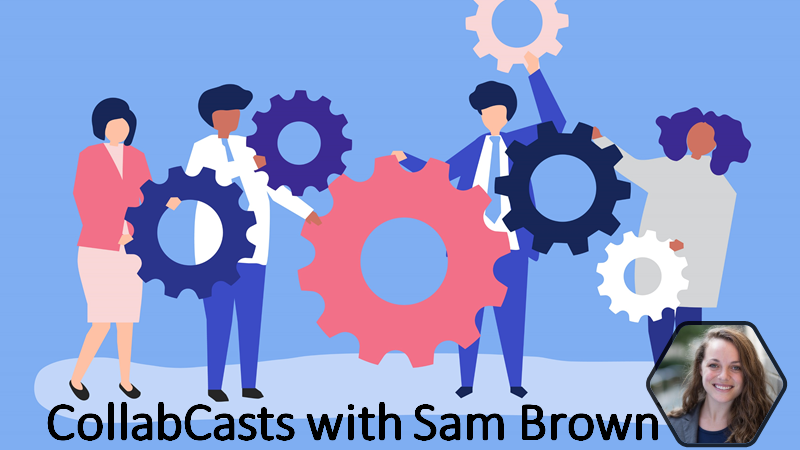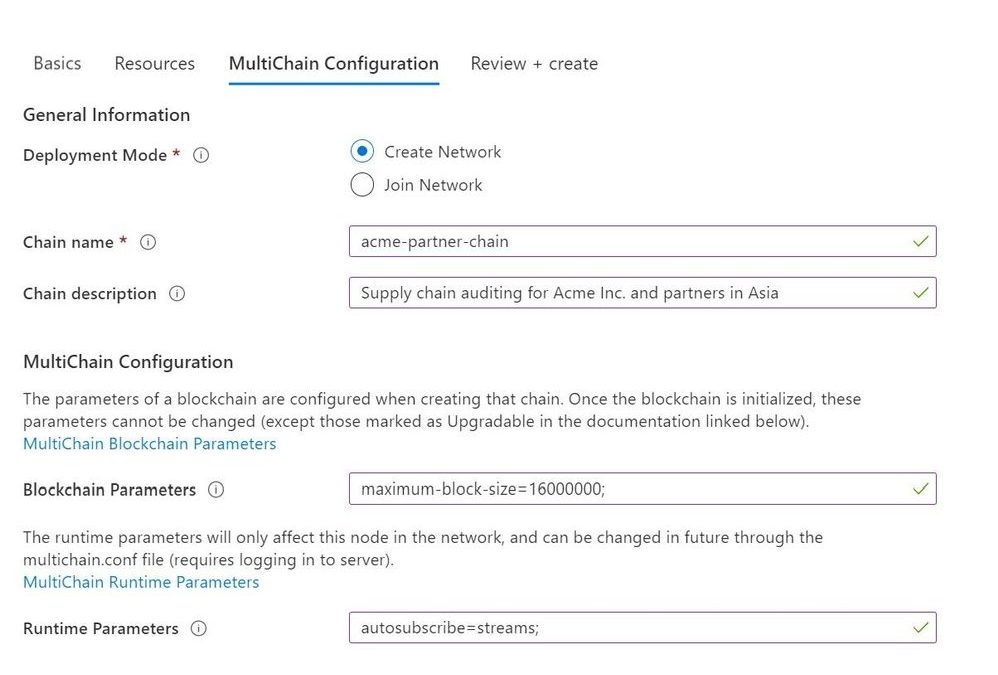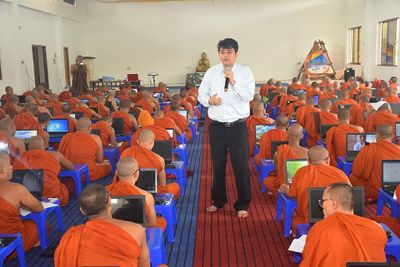
by Scott Muniz | Sep 14, 2020 | Uncategorized
This article is contributed. See the original author and article here.

All of our work spaces are in the midst of drastic change. Whether you’re coming back to the office, working from home, planning for the future of collaboration, or some combination, there is a best practice out there for you and your organization. On Wednesday, October 14th, at 12 Noon EST, we are teaming up with Poly to deliver a CollabCast with Sam Brown, focused on finding the right meeting solutions for your workspaces.

Agenda:
- Finding the right solution for every workspace
- Microsoft Teams Solutions for
- Mobile Workers
- Phones for Desk/Office Workers
- Small, Medium and Large Room Solutions
- Poly Promotions to get you and your customers to Native Teams
- Live Q&A
Presenters:


Event details:
OR
Pete and I will be your producers. Bring your questions and we look forward to seeing you there!

Sam Brown, Microsoft Teams Technical Specialist

Pete Anello, Senior Microsoft Teams Technical Specialist
![[Guest Blog] My rocky road to programming](https://www.drware.com/wp-content/uploads/2020/09/large-457)
by Scott Muniz | Sep 14, 2020 | Uncategorized
This article is contributed. See the original author and article here.
This article by Humans of IT Student Ambassador Dustin Thompson, a Computer Science senior from the University of Central Florida is part of our Student Ambassador Spotlight series in the lead-up to Microsoft Ignite. Dustin shares about his unconventional journey into computer science and offers some advice and encouragement to students that may be going through similar circumstances.
To say that my path to becoming a computer scientist was straightforward would be a lie. In fact, I didn’t even understand what a logarithm was going into college. Let’s rewind the clocks a couple of decades.
Rough Start
I was born to a mother that really wants to see me succeed. During the formative years of my life, she spent a lot of energy reading with me, teaching me Russian, and shuffling me to piano lessons and baseball practice. However, things quickly took a much rougher turn and as a developing kid, I did not take this change in direction well. The situation at home got hectic – I started rebelling, and before you know it, I was cutting class about as often as I would be failing assignments and tests. Needless to say, I was not a good kid. To add to my unconventional background, I studied theater growing up, not programming. I went to arts schools from 6th to 12th grade. My big plan was to graduate, move to L.A., and live life as a bohemian artist in hopes of making it in Hollywood. When I saw how that worked out for a friend of mine who got his GED and tried to make an early start, I got scared straight. But what does a guy who graduates in the bottom 10% of his class do at that point?
Crossroads
“No way I’m considering the military,” I thought. After some research, I discovered that community colleges did not often require specific GPA requirements. The inevitable choice for me was to go back to school and take a stab at college. I remember on the ride home from orientation, feeling lost, scared, yet oddly inspired – I was thinking back on my early days when I was a productive young boy. I thought about how much I loved science, music, and other fruitful subjects growing up. I thought that if I’m going to do this, I might as well go all the way and major in something STEM-related, just like my 7-year-old self would’ve wanted. Well, after a slow, slow two and a half years, I finally managed to get into the University of Central Florida’s CECS department. The shock of transferring was painful. On top of financial and lifestyle burdens, I felt so demotivated by how little I knew and how ridiculous my background was compared to my peers. All around me, fellow students had years of experience in tech whereas I wasn’t even capable of printing Hello World to the screen yet.
It wasn’t until after a year at UCF that I finally started to come out of my shell.
I took some professors that changed my life and indirectly introduced me to some lifelong friends. They showed me how to be proactive, how to apply the skills I learn in class, and how to find opportunities. Because of them, I started landing interviews and going to events. I attended my first hackathon at HackGT 6.

(HackGT 6)
I wrote an interpreter from scratch in Python at that event. This was two semesters after first learning how to code.
The purpose of all that was to illustrate a point repeated so often that it’s often regarded as background noise: Success isn’t a straight line. I mean, if you told me back in high school that I’d end up playing around with C++ graphics libraries in my free time, I’d proudly display the C++ I managed to pull off on my math quiz that day. Don’t think that just because you didn’t get the head start that many others around you got, you’re destined for failure or even just mediocrity. I hope to be able to convey this message through the Microsoft Humans of IT program this year.
Some Advice
Get involved. You can’t simply rely on luck to get where you want. Join a club at your university or start one if you’re feeling ambitious! Participate in events held by universities and companies such as hackathons like OpenHack (see more: https://openhack.microsoft.com/ & https://mlh.io/seasons/na-2020/events) and conferences like Microsoft Ignite (see more: https://myignite.microsoft.com/home). Try to explore your passions as well. Are you taking a bunch of discrete math courses but are really curious about how AI works? Find an AI club at your school or try to get a head start on learning via the Internet. The world is your oyster so make use of it. Believe me, you’ll surprise yourself – just as I was surprised by my own journey.
#HumansofIT
#StudentAmbassador
#KeepOnKeepingOn
by Scott Muniz | Sep 14, 2020 | Uncategorized
This article is contributed. See the original author and article here.
This post is jointly authored by Abhishek Hemrajani, Principal Product Leader, and Harsh Gupta, Director, Product Management, Workspace Services.
As customers continue to move to the cloud at rapid pace, having the tools and guidance to get them there makes all the difference. Today, organizations moving from on-premises without guidance can find it challenging and even frustrating to take the proper steps in order to ensure a smooth transition.
Citrix and Microsoft recognize that the journey to the cloud is different for each organization. Abhishek Hemrajani, Principal Product Leader at Microsoft, and I are excited to announce the development and publication of a migration guide to assist in your project.
Abhishek and the Microsoft Azure team collaborated directly with Citrix to create a guide that will help with easing the process of migrating from VMware vSphere to Citrix Virtual Apps and Desktops service on Microsoft Azure.
Prior to our development of this guide, customers had to pick from piecemeal solutions and blogs that caused delayed or even stalled migration projects. Citrix and Microsoft set out to create a comprehensive end-to-end guide to help you move to the Azure cloud with confidence; enabling you to effectively strategize, plan and execute a transition to the Azure cloud.
Migrating to cloud resources will modernize your deployment, providing enhanced elasticity, scalability, and management. With this documentation you’ll discover how to migrate from Citrix Virtual Apps and Desktops on VMware vSphere to Citrix Virtual Apps and Desktops service on Microsoft Azure. Some key areas of migration guidance include:
- Moving from Citrix Virtual Apps and Desktops on-prem to Citrix Cloud – Virtual Apps and Desktops service and leverage the latest in cloud management technology.
- Migrating from Citrix Storefront with Gateway to Citrix Workspace Service and Gateway Service in Citrix Cloud.
- Transitioning from Citrix Workspace Environment Manager (WEM) to WEM cloud service.
- Shifting on-prem hosted VDAs on vSphere to VDAs hosted on Azure
- File server transition to file servers on Azure and more
With the documentation now available in Citrix Tech Zone, we have spared no detail in walking customers through the process, including graphical diagrams, architecture and console images that take you step by step. This documentation combined with the new Citrix Automated Configuration Tool (tech preview) for Virtual Apps and Desktops enables IT to shorten the process of moving to the cloud.
To ensure this documentation is clear and concise, we reached out to several industry technical experts to test the process before publishing. Trond Eirik Haavarstein, Chief Automation Officer at xenappblog LLC recently tested the process and was pleased with the details the documentation and tools provided.
“After doing a lot of migrations to Citrix Cloud I’m really excited to have the Automated Configuration Tool and the extremely detailed Tech Zone document at my hands,” he said. “This is the resources I needed years ago.”
We know you’ll find this information helpful in your journey to the Azure cloud. Get the migration guide today.

by Scott Muniz | Sep 14, 2020 | Azure, Technology, Uncategorized
This article is contributed. See the original author and article here.
Multichain 2.0 is now generally available on Azure Marketplace. MultiChain Coin Sciences – the inventor of MultiChain technology – offers a new MultiChain 2.0 Community with support template via the Azure Marketplace. This template is suitable for companies wishing to run their own MultiChain Community node, with a support contract and without the hassle and complication of managing it on-premises.
MultiChain is one of the permissioned blockchain technologies and you can read more about the origins of it in this whitepaper. If you are wondering for what use cases does Multichain make sense, then visit this Multichain blog to get more details on some of the permissioned enterprise networks built on Multichain which are in production. MultiChain is particularly well suited for large scale (>1 billion entries) general data applications, since this makes it different from many other platforms which focus on providing asset/token ledgers.
Multichain template on Azure helps the customers to deploy Multichain node in few simple clicks with all the much-required customization like
- Resource settings
- Choice of Microsoft Azure Virtual Machine series
- Choice of Storage Disk size
- Network Settings
- Multichain configuration
 Multichain configuration
Multichain configuration
Alongside a pre-installed version of MultiChain 2 Community, the template also includes a secure https proxy and web-based dashboard for ease of management and integration with secure applications.
The dashboard provides the following value-added features:
- Server health monitoring (CPU/memory/disk).
- Node health monitoring (memory pool, wallet bloat).
- Blockchain health monitoring (block size limit).
- Node daemon stopping and starting.
- Optional checking, downloading, and upgrading to latest MultiChain Community version.
What customers are saying
“SAP is very pleased about MultiChain going live on Microsoft Azure Marketplace.
MultiChain on Azure provides a lot of flexibility regarding the underlying hardware configuration, the availability of many regions around the globe as well as the vast configurability options of MultiChain itself. Bundled with direct support from Coin Sciences and the reliable infrastructure of Microsoft, this forms a perfect offering for enterprise use cases – Alexander Gehres, Development Lead – SAP.”
Next steps
If you are developer, then visit Multichain for developers to learn more about Multichain.
Get started with your Multichain deployment today leveraging Multichain 2.0 Community Azure Marketplace template.

by Scott Muniz | Sep 14, 2020 | Uncategorized
This article is contributed. See the original author and article here.
Zar Ni Tyn faced an issue all too common for teachers at this moment: how can one teach without a classroom?
In addition to this challenge, though, Zar faced a problem very much unique to him: how can one teach Buddhist monks virtually when they have never experienced remote education?
Perhaps surprisingly, the answer to both questions is Microsoft Teams.
Zar is currently based in Myanmar and volunteering to teach computing at the Sitagu Buddhist Academy. The academy is one of the Southeast Asian country’s most regarded educational institutions in providing undergraduate and graduate-level training in Buddhist studies.
So, The Office Apps & Services MVP has been educating monks and nuns in Office 365 and Microsoft 365 as part of their Diploma in Computing.
But then came the coronavirus. After one year of teaching as per usual in Thanlyin, a major port city located across Bago River from the city of Yangon, Zar was forced to rethink his entire educational approach.
Students could no longer freely travel between their home and the academy, and nor could those who live with their family in other regions or countries stay in the city. Thus, Zar needed to bring his 250 students online with Microsoft Teams. The catch? None of them had previously used Microsoft Teams.
Zar – a Microsoft Certified Trainer – put his teaching skills to the test as he connected his students from across the country and introduced them to the platform. Thankfully, it didn’t take long for Zar’s classes to successfully move from the real world to the virtual world.
“Now we are teaching from Microsoft Teams and the students are very happy,” Zar says.
“It’s interesting because some of the monks did not attend normal high school and yet they can use Microsoft Teams. This is a unique feature to point out: Microsoft Teams is so simple that anyone can use it!”
The transition has been relatively seamless, Zar says, and he reiterates how happy his students are to connect with the world. “I am very proud, actually, because I have been able to modify my teaching method using Microsoft Teams. It is different but so far we are managing it easily!”
Zar, who also teaches at Thanlyin Technological University, adds that many people in Myanmar during this pandemic are using and engaging with Microsoft 365 Education.
For more information on Zar, check out his Twitter @zar_tyn


by Scott Muniz | Sep 14, 2020 | Azure, Technology, Uncategorized
This article is contributed. See the original author and article here.
The cloud offers a model of simplicity for on-premises workloads
Customer IT environments have greatly evolved over the past decade, with a growing number of organizations choosing to host resources in the public cloud to gain benefits such as simplified management, lower total cost of ownership (TCO), and unlimited scale. At the same time, teams have also continued to acquire infrastructure in their own datacenters to host workloads on premises when this arrangement best suits their needs. Data sovereignty rules, government regulations, and corporate policies, for example, often keep data from being stored in the public cloud—and data gravity naturally encourages teams to deploy applications close to where data already resides. Internet of Things (IoT) applications are also working against the overall trend toward the public cloud by creating a new center of data gravity at the intelligent edge.
The net result of these developments is that, even though customers have come to expect the level of automation, portability, consistency, and at-scale management available through public cloud services, the cloud still remains out of reach for many workloads. In addition, customer infrastructure is becoming less manageable than ever, dispersed not only among different locations in different clouds, datacenters, and the edge, but also diversified among different technologies, including physical infrastructure, virtual infrastructure, and, more recently, container-based infrastructure.
What’s sorely needed to improve manageability is to take the managed services and self-service administration workflows that are available through public clouds such as Microsoft Azure and bring them to any environment, including the customer datacenter. A single control plane is needed both to unify management and to deliver platform-as-a-service (PaaS)-like capabilities outside the cloud, so as to simplify the deployment, management, scaling, governance, and patching of databases and applications. Bringing PaaS-like services outside the cloud would also help protect workloads by easing the configuration of high availability (HA), disaster recovery (DR), and security for these resources.
Microsoft has been a leader in recognizing and supporting businesses’ needs for hybrid infrastructure, offering a portfolio of Azure Stack products that combine hardware and software to extend Azure services and capabilities to datacenter, remote office, and edge locations. Now, Microsoft is introducing a way to run Azure services on customer premises and to extend Azure management across all customer environments.
Introducing Azure Arc
Azure Arc is a set of software technologies that is designed to help companies meet their governance challenges and make Azure services available everywhere across their diverse and sometimes sprawling infrastructures. Azure Arc also enables users to centrally deploy and manage servers, services, and applications in any environment where Azure Arc has been enabled. With Azure Arc, familiar Azure tools, technologies, and methods can be used across environments, including environments with limited or no connectivity to Azure.
At the most basic level, Azure Arc delivers two broad features:
- Azure Arc extends the management capabilities of Azure to customer infrastructure outside of Azure—across datacenter, multicloud, and edge environments. Through this feature, administrators can register resources in Azure Resource Manager that are hosted outside of Azure, and then manage these resources centrally in Azure. This capability is delivered through Azure Arc enabled servers and Azure Arc enabled Kubernetes.
- Azure Arc takes PaaS data services previously available only in Azure and brings them to customer premises and other public clouds. This feature is delivered through Azure Arc enabled data services.
We are planning to publish several articles on Azure Arc and its use cases in various customers scenarios in the coming weeks and months. Stay tuned!
To read more about Azure Arc, visit the product page.






Recent Comments